Growing up in Florida means a childhood brimming with creepy crawlies: from lizards to ants to mosquitos to roaches, I thought I’d seen them all.
But it wasn’t until I moved into an apartment in the Tampa Bay Area that I became all too acquainted with an insect that can cause damage to your home and your mental health: the termite.

What are termites?
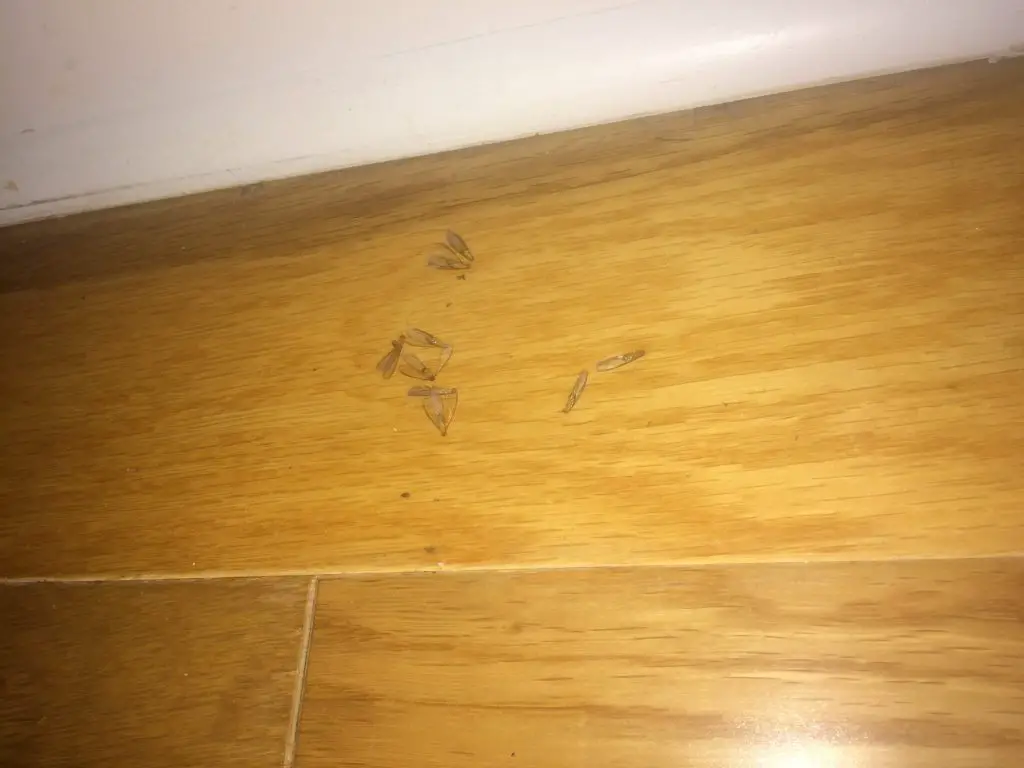
Termites are insects that feed on wood, but there are many different kinds of termites.
In general, they are broken down into two main categories:
- Subterranean – These termites can cause the most severe damage in the shortest amount of time. As their name implies, they live below the earth, which means you’ll find them mostly in the dirt beneath your home. To get into your home, they make mud tunnels along your apartment’s exterior.
- Drywood – These termites are much slower at causing damage than subterranean termites. Drywood termites live inside your home’s walls and maybe even in your flooring (if you have wood floors).
If you had to choose the kind of termite you’d have (but I mean, who really wants termites?), you’d choose drywood because, again, they are slow. It takes years for them to damage your home so much that it would fall apart.
The termites that infested my apartment were Drywood termites.
In addition to the two main categories of termites, though, there are types/classes of termites and different stages of their lifecycle.
For example, there are worker termites, queens and kings, and so on. And each lifecycle stage of the termite looks different!
I’d always thought termites were wingless insects with long bodies and a huge head with massive pincers for eating wood—but those are NOT the kinds of termites I found in my apartment.
That’s because the kinds of termites I found in my apartments were swarmers. They were Drywood termite swarmers, which look kind of like flying ants. Really misleading. They were not ants!
Swarmers are termites that are ready to mate. They swarm in the warm spring months, and as soon as they find a suitable mate, they lose their wings, drop to the floor and, um, get it on.
The swarmers then lay their eggs and nurture the eggs until they hatch. It takes 3 to 5 years for Drywood termite colonies to mature enough to the point that they will swarm. That means if you’ve got swarmers in your apartment, your apartment has actually been infested for at least 3 years! You’re just now finding out.
The Backstory: How I Found Out My Florida Apartment Was Infested With Termites
In December 2018, I was searching for an apartment in Florida when I came across a Craigslist listing for the PERFECT apartment: a cute little white cottage house with yellow trim and a lime green door. It was in my ideal neighborhood and didn’t share walls with any tenants—a dream!
When I came by to check it out, it all looked great. Everything looked clean and brand new. I signed the lease and paid the deposit.
But just before I moved in, my landlord told me, “Oh, this apartment used to be infested with termites. But it was treated, and I just had pest control come and inspect it and they didn’t find anything. Just keep an eye out for any termite droppings. If you see any, let me know.”
This struck terror into my heart. I had already signed the lease and paid the deposit and first month’s rent, and NOW he tells me this??
But, the landlord seemed like a good guy, so I didn’t push the issue. I figured the termites were gone, just like he’d said.
About one month later, one quiet night, I heard the faintest sound coming from the wall by one of the windows. It was like a clicking sound, but I could barely hear it. When I put my ear closer to it, it indeed sound like a clicking or…chewing sound inside the wall.
I Googled it, and I found out that clicking sounds in your walls are caused either by carpenter ants or…termites.
Given the apartment’s infestation history, I immediately suspected termites. But when I told my landlord about it, he just said there was no way because pest control had already inspected the building.
So I let it slide. But then, I kept finding frass around the apartment. It wasn’t a lot (my landlord had told me that it should show up in HUGE piles). So every time I showed the frass to my landlord, he just brushed it off and said it was falling out of the walls from the previous infestation (which can be true; even after your house is tented, sometimes frass will still fall out of the old holes the termites made, even long after the termites have died).
I kept letting it slide and letting it slide. The clicking sounds and frass kept happening through the winter.
And then…one hot, spring day in May…it happened. I was getting ready for bed late one night, and as I went to unplug the string lights beside my bed, I saw them—a HUGE cluster of what looked like giant flying ants. They were crawling ALL over the lightbulbs, seemingly attracted to the light.
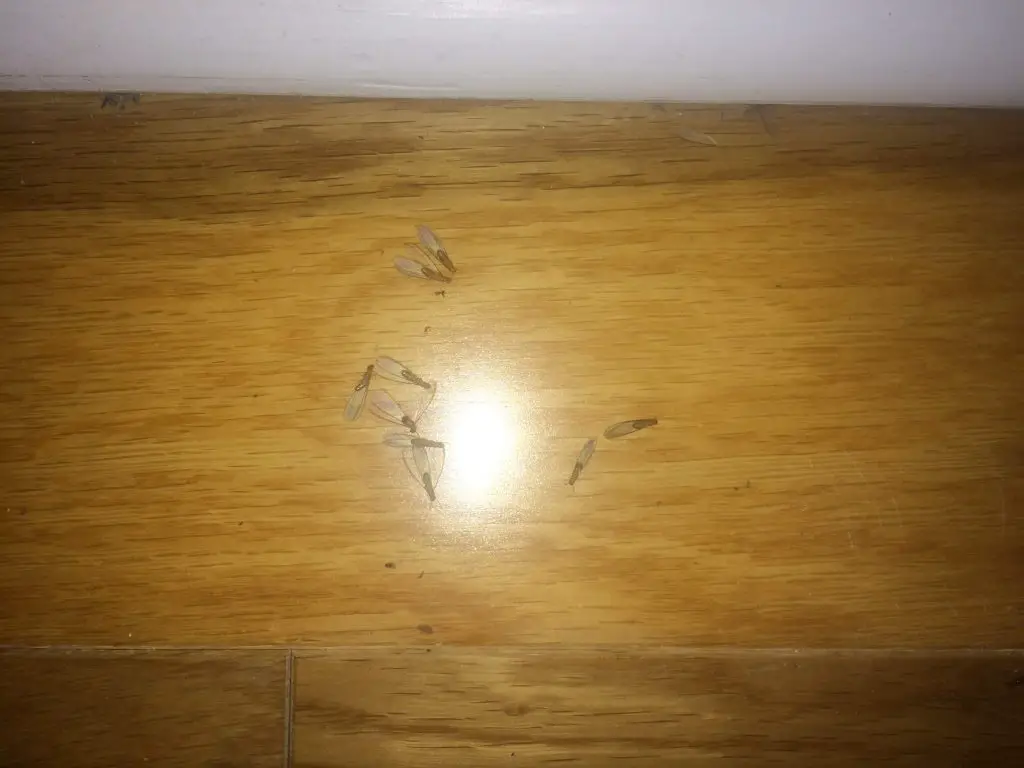
I panicked and Googled what termites looked like; that’s when I found out that swarmers can look like flying ants.
Thankfully, literally days before the termite swarm happened, I had turned in my notice that I was moving out! I had a month-to-month lease, so I was able to do this. I wasn’t stuck in a lease—yay!
Then, I looked around the area where the string lights were, and to my horror…there were MORE. Coming from EVERYWHERE. I couldn’t locate one source—termites were literally emerging from the floor, the walls, the ceiling. They started flying everywhere and landing on me!
They were attracted to light, so they even started landing on my laptop screen. I was so disgusted, but I didn’t know what to do. It was about 3 in the morning!
I didn’t sleep that night. I waited until 6am to text my landlord about it; he was out of town so I sent him photos.
I found an Airbnb last-minute and checked into that for a few days, hoping that the termites would get treated immediately.
Well, not so fast: Because it was May, the middle of what’s known as “swarm season,” my landlord’s chosen pest control company was backed up for another WEEK. I’d have to wait an entire week for the apartment to get treated; meanwhile, these termites were taking over EVERYTHING. They kept coming out of every nook and cranny and flying everywhere.
The worst part was they were dropping their two pairs of lightweight, fluorescent wings. I was finding their wings and their little caterpillar-like bodies all over my house. They were in my cabinets, on my bed, on my clothes, on my couch—everywhere!
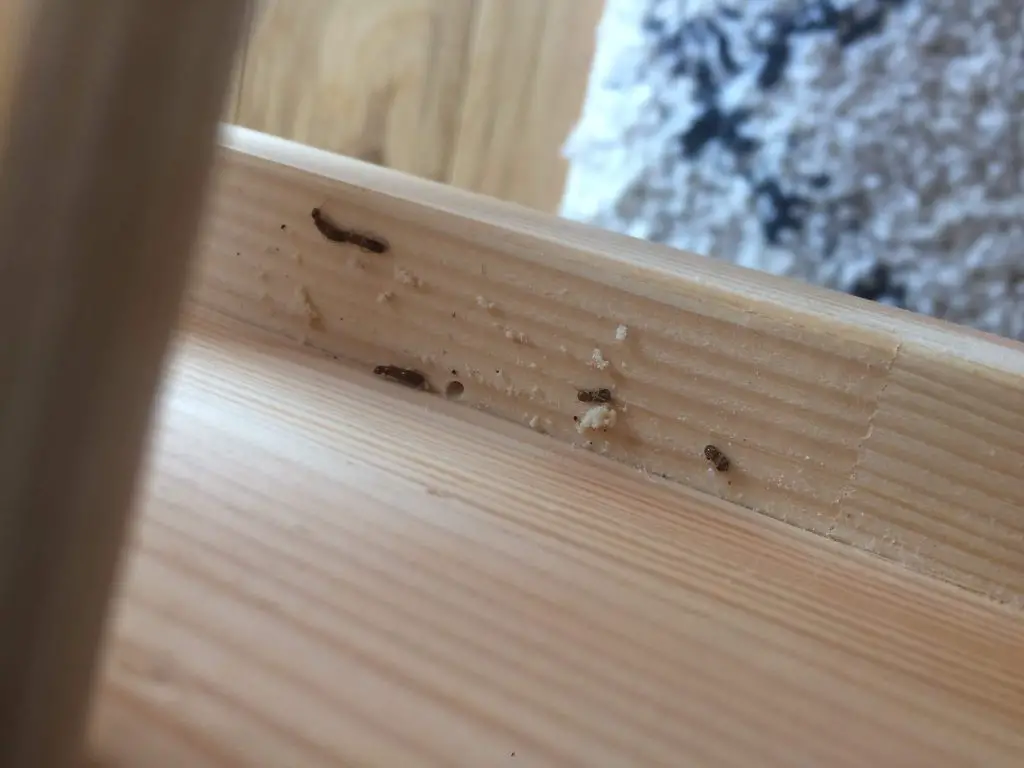
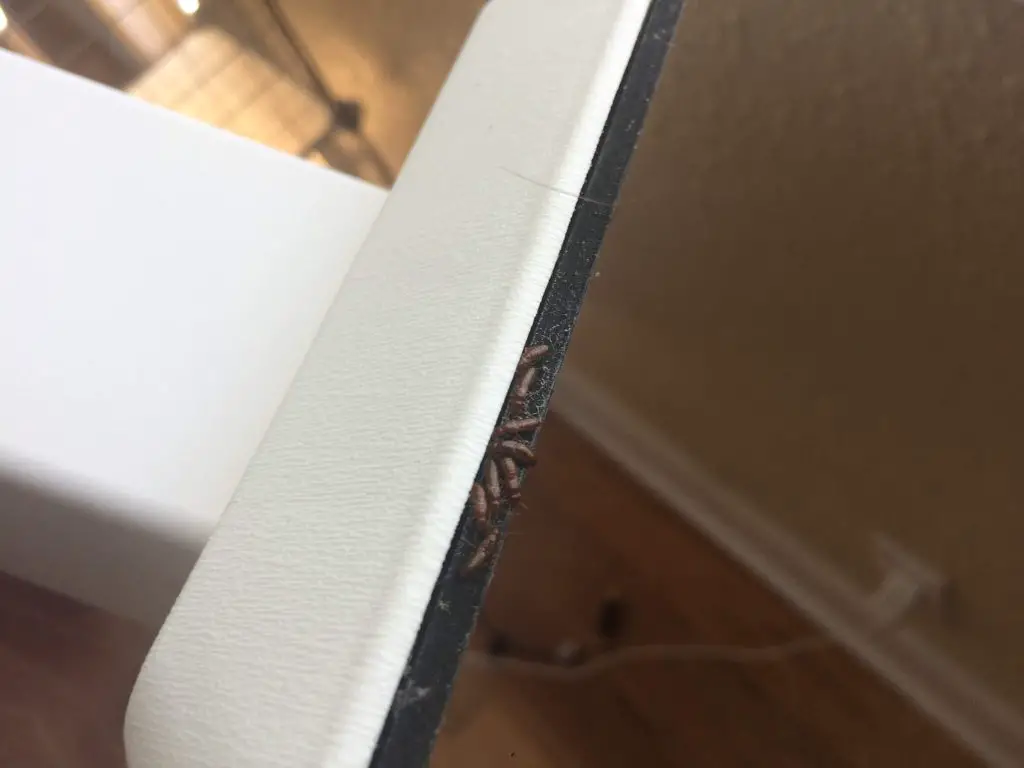
It was torment, and I was paying hundreds of dollars just to stay in Airbnbs to escape it.
Eventually, when I couldn’t afford the Airbnbs anymore, I returned to my apartment. I ordered a pop-up mosquito net on Amazon to put over my bed so that the termites wouldn’t crawl on me at night.
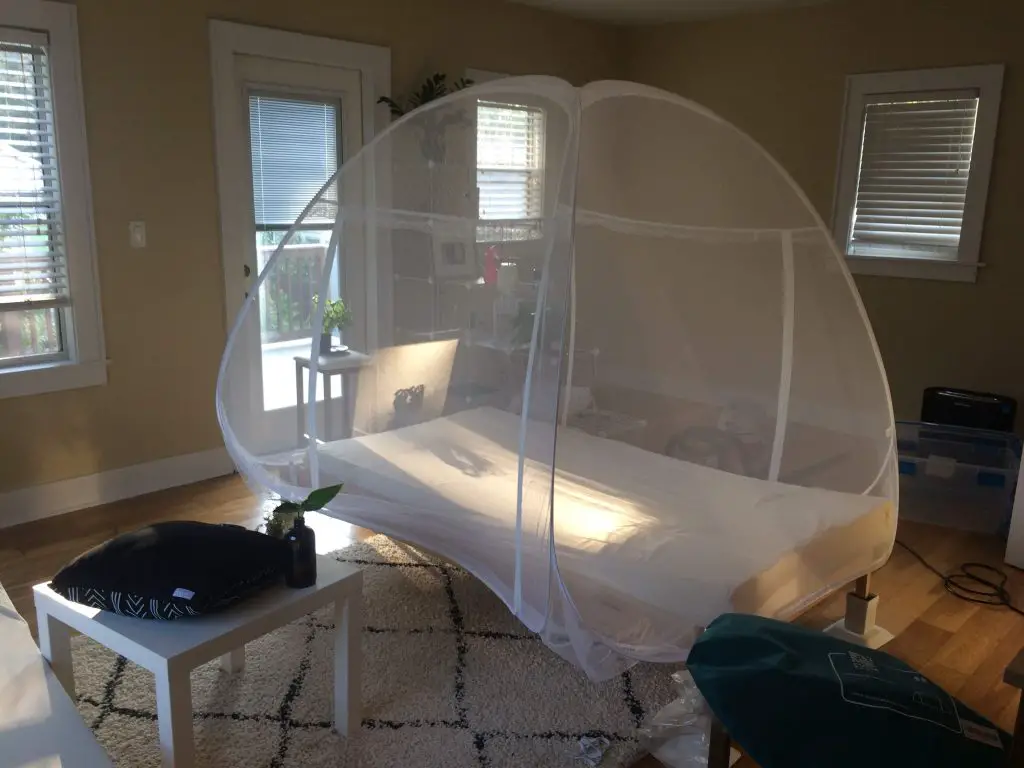
I also bagged and sealed all my clothing, so the termites wouldn’t get into them. Lastly, I learned how to “herd” the termites by turning on a bright light away from me, hoping that they’d be attracted to the light and stay away from me, my computer, and my food.
I was there the day the pest control company came to treat the infestation. To my surprise, they didn’t recommend tenting; their company didn’t even offer such a service. They simply injected foam pesticide into all of the holes they could find.
That was supposed to take care of it, but the termites swarmed even worse that night after the treatment. They swarmed every day for a week, until I finally moved out.
I was relieved to leave, even though I had loved that apartment. It no longer felt like home to me. And once I left, the termites were no longer my problem, but my landlord’s.
How can you tell if your apartment has termites?
Before the swarming began, there were signs that I had termites in my apartment:
- I heard very faint clicking noises in the wall around one of my windows. This is either the termites eating away at the wood or banging their heads against the wood (they do this to signal to the rest of the colony that there is danger).
- Frass (termite droppings) lining my windowsills. When you have a termite infestation, you’ll often find tiny, brown droppings in piles around your windows or on the floors. They look like coffee grounds. This is termite poop, but it’s just made of wood, so there’s no real danger to them. Now, I kept finding these piles, but my landlord insisted that these were just leftover from the last termite infestation. That, of course, wasn’t true.
- Dropped termite wings on the windowsills and floors. This indicates that termites have swarmed the building. When termites swarm, they drop their wings and then mate. You will find their transparent wings EVERYWHERE; they tend to have a darkish tint to them, especially around the edges. Here’s a photo of termite wings in an apartment in Tampa that I toured yesterday!

What should you do if you find termites in your apartment?
Take photos and video as proof, then alert your landlord immediately. They should call pest control and have them come and inspect the infestation. Ultimately, they should have the entire place tented, as that’s the only way of guaranteeing you have killed all the termites. If they only spot treat the apartment, it won’t kill the source. The termites will keep coming back.
Do not try to treat the termite infestation yourself.
Now, even if you tent the apartment, termites could still come back. That’s because termites swarm every spring, and they swarm outside too! That means they can move from house to house. Prevention is key. Pest control should come regularly to spray around your house to try to prevent termites from taking root there. Even so, if you live in an area like Florida, termites are a huge problem. It’s likely you’ll continue to have to treat for as long as you live there.
Some other things I did while I was living in an apartment infested with swarming termites:
- Bagged and sealed all my clothing
- Put a pop-up mosquito net on my bed
- At night, made sure to only turn on lights that were AWAY from me. That helped the termites swarm to the light and keep away from me.
What is a landlord’s responsibility if an apartment is infested with termites?
There are laws protecting tenants in the case that their apartment becomes infested with termites, but the laws are not that strong. I am not a lawyer, but from what I read online and what my landlord friend told me, a landlord is generally only responsible for:
- Treating the termite infestation in a timely manner
- Reimbursing you for the cost of the nights you have to spend away while they treat the apartment
To find out more, Google your state’s landlord tenant laws.
For the state of Florida, part of Florida statute 83.51 states:
“(2)(a) Unless otherwise agreed in writing, in addition to the requirements of subsection (1), the landlord of a dwelling unit other than a single-family home or duplex shall, at all times during the tenancy, make reasonable provisions for:
The extermination of rats, mice, roaches, ants, wood-destroying organisms, and bedbugs. When vacation of the premises is required for such extermination, the landlord is not liable for damages but shall abate the rent. The tenant must temporarily vacate the premises for a period of time not to exceed 4 days, on 7 days’ written notice, if necessary, for extermination pursuant to this subparagraph.”
In my case, my landlord did technically get pest control to treat the infestation quickly—they just did a shitty job of it. And even though I had to pay hundreds of dollars for an Airbnb to escape the incessant swarming, he did not offer to reduce rent or pay me anything (nor did I ask him to).
Also, I didn’t have to leave the apartment while it was “treated” because they only sprayed a few areas; they didn’t tent it. That meant that my landlord was not legally obligated to pay me anything.
How do you get rid of termites?
Tenting, also known as fumigation, is the only way to truly get rid of all termites in your home. Now, it’s important to point out that tenting does not kill termite eggs. BUT, termite eggs, once they hatch, cannot survive without the colony, so these will die on their own.
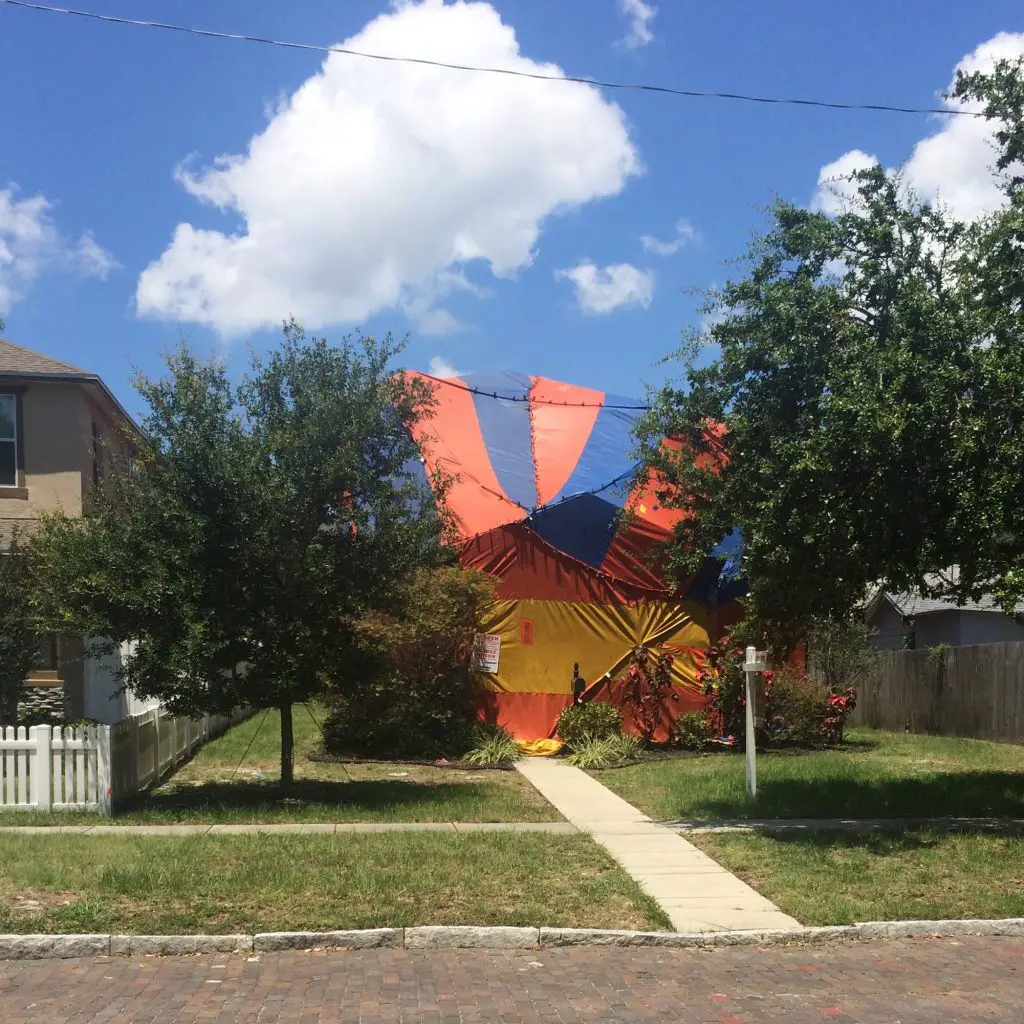
Some companies will spot treat, but I think it’s B.S. There’s no way of knowing they got all the termites (termites are really good at hiding in your walls).
Tenting your house in the case of infestation, and then doing spot treatment throughout the year as prevention, is the best way to safeguard your home against these wood-eating critters.
Can termites get into furniture and clothes?
This was my BURNING question when my apartment got infested!
The answer, from my personal experience, is that: yes, it’s possible.
The swarmers did get into my clothes in my closet and were crawling around in them. But the simple fix with clothes is to wash and dry them. Termites die pretty easily. So, I just washed all my clothes and linens in hot water and dried them on high heat.
With furniture, however…it’s trickier.
Any wood furniture in your termite-infested apartment is at risk of also being infested with termites. I had unfinished pine wood beds from IKEA. The termites LOVED those. Even though the exterminator said there was NO way swarmers could chew through wood because they didn’t have the mouthparts—that wasn’t true!
Exhibit A:
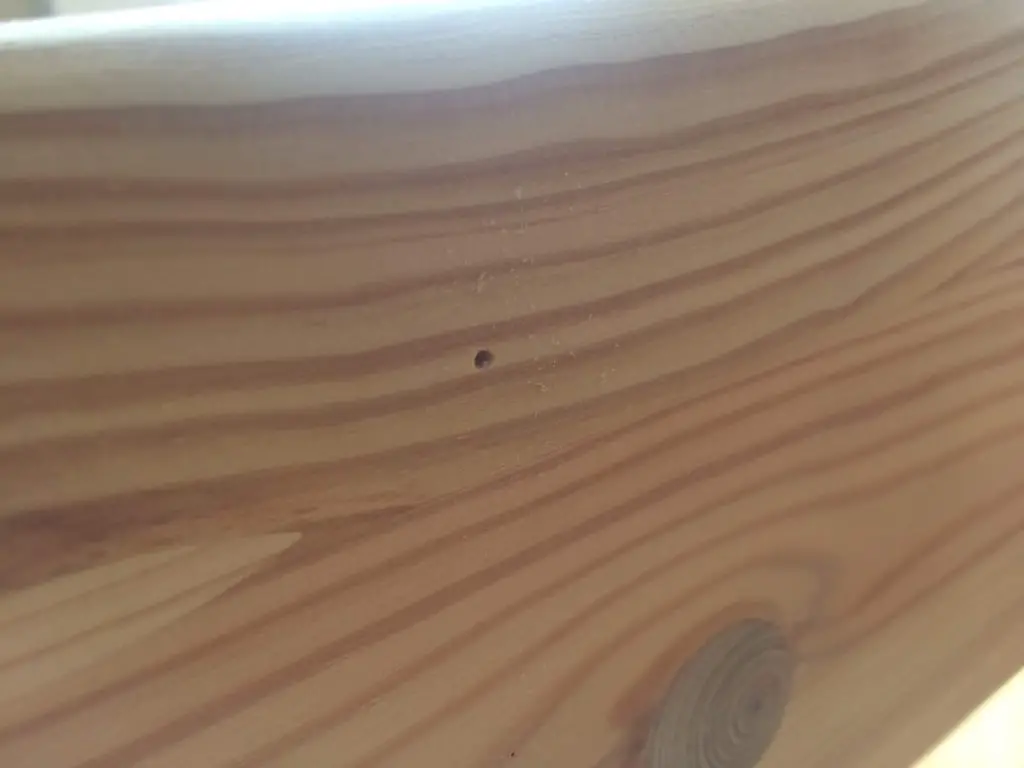
Exhibit B:

Some places do offer furniture fumigation. Often, this means you bring your pieces of furniture to their site, and you put them inside a sealed vault that they then fill with the pesticide gas. You drop it off and then pick it up a few days later.
I called around to a few different places that offered furniture fumigation, but in the end, I didn’t use any of them.
For any furniture I had that was wood, I threw it out. I didn’t want to risk someone else catching termites because of me.
For the other furniture, I let the buyers know that the apartment they were buying it from had termites. But since the other furniture was metal or largely metal, people didn’t care.
Termite Survival Kit
If you, poor thing, found termites in your apartment—I am SO sorry. It truly is a nightmare. Here are the items that helped me live through it:
- Ziploc jumbo storage bags – You can keep your clothes safe from termites by sealing them in these large bags.
- Pop-up mosquito net – To sleep free from the creepy crawlies WITHOUT having to poke holes in my ceiling, I bought a pop-up mosquito net. That way, I could just place the net over the bed. You could also get a hanging mosquito net—just know that you will have to make a hole in the ceiling to hang it from.
